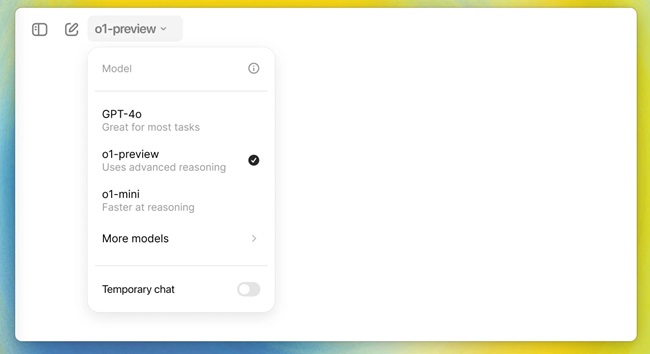OpenAI's O1 Models: Deep Dive into Reasoning and Problem Solving
 Rhytham Negi
Rhytham NegiHey everyone! My friend recently got access to OpenAI's shiny new O1 models (O1 and O1-Preview), and I've been lucky enough to play around with them. Let me tell you, these models are something else! They're designed for deep reasoning and problem-solving, making them perfect for tasks that require serious brainpower. Think advanced coding, scientific reasoning, and complex data analysis.

O1 vs. O1-Mini: What's the Difference?
The O1 series has two main players:
O1-Preview: This model is the powerhouse. It tackles complex problems using a vast pool of general knowledge.
O1-Mini: Need speed and efficiency? O1-Mini is your go-to. It's optimized for coding, math, and science tasks where broad knowledge isn't as critical.
Thinking Differently: O1 vs. GPT-4
Now, you might be wondering how these models stack up against the reigning champ, GPT-4. While GPT-4 excels at fast responses, image inputs, and versatility, the O1 models are all about deep thinking. They utilize a unique feature called reasoning tokens, allowing them to break down problems internally before spitting out an answer. This makes them ideal for complex challenges, even if it takes a bit longer.
Limitations and Workarounds
Keep in mind that the O1 models are still in beta. This means:
Text-only input: No images or other fancy inputs just yet.
Limited functionality: Some advanced features like function calling aren't available yet.
Prompting for Success: Getting the Most Out of O1
Here's the inside scoop on how to get the best results from O1:
Clear and specific prompts: Just like talking to a human, the clearer your instructions, the better the output.
Don't ask for reasoning steps: While you can ask for explanations, OpenAI wants to keep the inner workings of those reasoning tokens under wraps for now.
Experiment with delimiters: To encourage deeper thinking, try using delimiters like "```" or """" to separate different parts of your prompt. This can help the model understand the structure of your request and provide more thoughtful responses.
Coding Powerhouse: A Snake Game Example
One of the coolest things I've used O1 for is coding. I asked it to create a playable Snake game in Python, and it delivered! The code was clean, functional, and even included instructions on how to run it.
Final Thoughts
The O1 models are a huge step forward in AI. They're not just generating text; they're thinking. While still in their early stages, the potential for these models is immense. I'm excited to see what the future holds for O1 and how it will revolutionize problem-solving across various fields.
Mind Map: OpenAI's O1 Models
OpenAI's O1 Models
|
--------------------------
| |
O1-Preview O1-Mini
| |
Deep Reasoning Speed & Efficiency
General Knowledge Coding, Math, Science
| |
-------------------------------------------------
| | |
Reasoning Tokens Text-Only Input Limited Functionality
Deep Thinking (Beta Limitation) (Beta Limitation)
|
-------------------------------------------------
| | |
Clear Prompts Don't Ask for Experiment with
Reasoning Steps Delimiters
Subscribe to my newsletter
Read articles from Rhytham Negi directly inside your inbox. Subscribe to the newsletter, and don't miss out.
Written by
